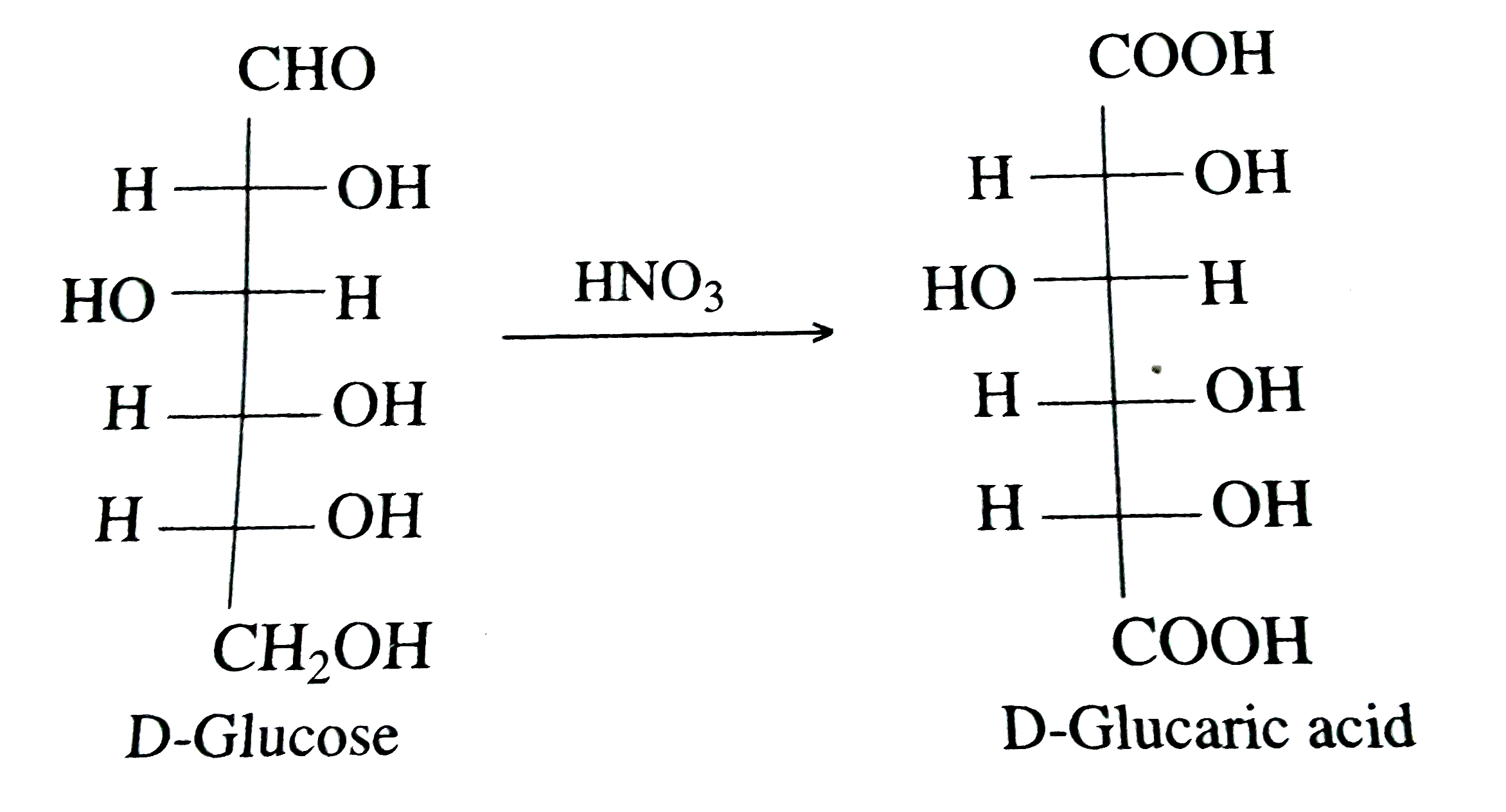InterviewSolution
This section includes InterviewSolutions, each offering curated multiple-choice questions to sharpen your knowledge and support exam preparation. Choose a topic below to get started.
| 9001. |
Which of the following combination is INCORRECT option ? |
|
Answer» `(i) (III) (R )` |
|
| 9002. |
Time required to decompose SO_2Cl_2 to half of its initial amount is 60 minutes. If the decomposition is a first order reaction , calculate the rate constant of the reaction. |
|
Answer» Solution :For a FIRST order reaction, `k=(0.693)/(t_(1/2))=(0.693)/(660min)=1.155x10^(-2)"min"^(-1)=(0.693)/(600xx60)=1.925xx10^(4)s^(-1)` |
|
| 9003. |
Which of the following pair of species is not iso-structural ? |
|
Answer» `Icl_(4)^(-),XeF_(4)` Hybridisation in `CO_(3)^(2-) = SP^(2)` `therefore` They are not structural ISOMERS. |
|
| 9004. |
Which of the following groups contain coloured ionsout of Cu^(2+), Ti^(4+), Co^(2+) and Fe^(2+)? |
|
Answer» Only `Cu^(2+), TI^(4+)` `{:("Ion","Electronic","Unpaired"),(,"configuration","ELECTRON"),(Cu^(2+),3d^(9),1),(Ti^(4+),3d^(0),0),(Co^(2+),3d^(7),3),(Fe^(2+),3d^(6),4):}` Since `Cu^(2+),Co^(2+) and Fe^(2+)` contains unpaired electrons these are COLOURED ions. |
|
| 9005. |
When H_2S is passed through nitric acid solution, the product formed is: |
|
Answer» MILK of SULPHUR |
|
| 9006. |
Which of the following is/are the intensive property? |
|
Answer» Temperature |
|
| 9007. |
Which of the following has a higher value for molar conductivity under similar conditions? "0.1M KCl or 0.01 M KCI". |
| Answer» SOLUTION :`"0.01M KCL "`has a higher value for molar CONDUCTIVITY under similar CONDITIONS. | |
| 9008. |
Which of the following has hcp crystal structure ? |
|
Answer» `NaCl` |
|
| 9009. |
Which of the following provide chief structural material for tissues |
|
Answer» myosin |
|
| 9011. |
Which of the following tetra atomic species are planar and polar, [I_(2) (CN)]^(+), ICl_(2)^(-), XeF_(2), ICl_(3), BF_(3), C Cl_(4)^(-), BF_(4)^(-), NH_(4)^(+), AlCl_(3), ClF_(3) |
Answer» 
|
|
| 9012. |
Which of the following will give yellow precipitate with I_2//NaOH ? |
|
Answer» `CH_3COOCOCH_3` `CH_3undersetoverset(|)(OH)(C )H - CH_2 -CH_3 underset(NaOH)OVERSET(I_2) CHI_3 + HO - oversetunderset(||)(O)(C ) - CH_2 - CH_3` |
|
| 9013. |
Which of the following is not present in nucleic acids |
|
Answer» Uracil |
|
| 9014. |
Which of the following reactions can give carboxylic acid? |
|
Answer» `C_(6)H_(5)OH+NaOH+CO_(2)to` |
|
| 9015. |
Using IUPAC norms, write the systematic names of the following: [Co(NH_(3))_(4)Cl(NO_(2))]Cl |
| Answer» SOLUTION :Tetraamminechloridonitrito-N-cobalt(III) CHLORIDE | |
| 9016. |
The size of the species, Pb,Pb^(2+), Pb^(4+) decreases as - |
|
Answer» `Pb^(4+) gt Pb^(2+) gt Pb` |
|
| 9017. |
Which of the following can possibly be used as analgesic without causing addiction and modification ? |
|
Answer» ACETYLSALICYLIC Acid |
|
| 9018. |
What will be the slope of a logPVs logT graph plotted at constant volume? |
| Answer» Solution :As per Gay Lusaac’s LAW `P = KT` or `logP = logT + LOGK` . This is a GRAPH of a straight line with `"slope" = 1` and `"INTERCEPT" = logk` . | |
| 9019. |
Writetwo main functionof carbohydratesin plants . |
|
Answer» Solution :Main functionof carboydrates in PLANTS: (i) Carbohydratesare used as stronger molecules as strach in plants . (ii) CELL WALL of bacteria and plantsis madeupof CELLULOSE . |
|
| 9020. |
Which of the following metal sols cannot be prepared by Bredig's are method? |
|
Answer» Copper |
|
| 9021. |
Which of the following substance on being heated will give a gas that does not turns lime water milky :- |
|
Answer» `LiNO_(3)` (ii) `ZnCO_(3) overset(Delta)to ZnO+O_(2)` (iii) `ZnSO_(3) overset(Delta)to ZnO+SO_(2)` (IV) `MgCO_(3) overset(Delta)to MgO +CO_(2)` `CO_(2) & SO_(2)` gas turns lime water into milky |
|
| 9022. |
Which of the following can’t be an example of an S_(N)2 reaction? |
|
Answer» `CH_(3)- CH_(2) - OH overset(-H_(2)O)(rarr) CH_(2) = CH_(2)` <BR>`(CH_(3))_(2) "CHBr" overset(OH^(-))(rarr) (CH_(3))_(2) CH - OH + Br^(-)` |
|
| 9023. |
When ethyl hydrogen sulphate is heated with excess of alcoholat 410 K, the product obtained is |
|
Answer» ETHANE |
|
| 9024. |
Which one of the following statements about the zeolites is false? |
|
Answer» They are used as cation exchangers. |
|
| 9025. |
Which of the following calcium salts are required to get ethanal by dry distillation process? |
|
Answer»

|
|
| 9026. |
Which of the following colloids cannot be easily coagulated ? |
|
Answer» IRREVERSIBLE colloids |
|
| 9027. |
Write the formula for the following complex : Pentaamminenitrito-O-Cobalt(III) |
|
Answer» Solution :Pentaamminenitrito-O-cobalt (III) `[Co(NH_(3))_(5)(ONO)]^(2+)` |
|
| 9028. |
What is the action of the following reagents on glucose? (a) bromine water(b) dilute HNO_(3) hydroxyl amine |
|
Answer» Solution :(a) Bromine water : When glucose reacts with bromine water, GLUCONIC acid is formed. `underset("Glucose")(CH_(2)OH) (CHOH)_(4) CHO + [O] overset(Br_(2)//H_(2)O)(to) underset("Gluconic acid")(CH_(2)OH (CHOH)_(4)) COOH` (b) Dilute `HNO_(3)` : When D-Glucose is treated with nitric acid, oxidation of D-Glucose TAKES place. The aldehyde and alcohol group of glucose are ozidized to carboxylic acids forming D-Glucaric acid.  (C ) Hydroxylamine : D (+) glucose reacts with hydroxyl AMINE and yield an oxime. The structure of the oxime would be: 
|
|
| 9029. |
Which of the following ligand does not as pi-acid ligand? |
|
Answer» `N_(2)` |
|
| 9030. |
Which products are obtained on electrolysis of concentrated NaCl solution by using graphite as inert electrode ? |
|
Answer» `H_(2)` on anode, `Cl_(2)` on CATHODE and NAOH in solution. |
|
| 9031. |
What is corrosion? CO_2 is always present in natural water. Explain its effect (increases, stops or no effect) on rusting of Fe. |
|
Answer» Solution :Corrosion is a process of slowly eating AWAY of the metal DUE to the attack of atmospheric gases on the surface of metal resulting into the formation of compounds such as oxides, sulphides, carbonates, sulphates, etc. Factors affecting corrosion are: (i) REACTIVITY of metal. (ii) PRESENCE of IMPURITIES (iii) Presence of air and moisture (iv) Strains in metals (v) Presence of electrolytes. `CO_2` increases the rusting of iron greater the number of `H^+` ions, faster the rusting will take place. |
|
| 9033. |
Which one of the following prevents the incorporation of new amino acids to the protein? |
|
Answer» atenolol |
|
| 9034. |
What are lyophillic and lyophobic sols ? Give one example of each type. Why are hydrophobic sols easily coagulated ? |
|
Answer» Solution : Lyophilic COLLOIDS. Lyophilic mean "solvent loving". These are the substances which when mixed with a suitable solvent as the dispersion medium directly from the colloidal solution are called lyophilic solution. Examples : Gum, gelatine, STARCH, rubber, sols. Lyophobic colloids. Lyophobic mean "solvent heating". These are the substance, when mixed with dispersion medium do not form colloidal solution. Their solution can be PREPARED only by special method, such substances are called lyophobic solution. Examples: METALS and their sulphides sols. Hydrophobic colloids are easily COAGULATED because these are less stable and colloidal particles carry some change. |
|
| 9035. |
Which of the following complex species does not involve inner orbital hybridization? |
|
Answer» `[CO(NH_3)_6]^(3+)` |
|
| 9036. |
What is the effect of rise in temperature on the solubility of gases in liquids? |
| Answer» SOLUTION :DECREASES. | |
| 9037. |
Which of the following halide undergoes hydrolysis on warming with water /aqueous NaOH? |
|
Answer»
|
|
| 9038. |
Which oxyacid of sulphur has S-O-S link ? How is it prepared? |
|
Answer» Solution :`H_(2)S_(2)O_(7)` oleum (or) fuming (or) pyrosulphuric acid has `S-O-S` link. Pyrosulphuric acid is prepared by dissolving sulphur TRIOXIDE in CONCENTRATED SULPHURIC acid. `SO_(3)+H_(2)SO_(4)rarrH_(2)S_(2)O_(7)` |
|
| 9039. |
Which of the following compounds contains both ionic and covalent bonds? |
|
Answer» `CH_2Cl_2` |
|
| 9040. |
which of the following amines form foul smelling compound on heating with chloroform and ethanol KOH? |
| Answer» ANSWER :D | |
| 9041. |
Which of the following is a lo amine? |
|
Answer» Tert. BUTYLAMINE |
|
| 9042. |
Which of the following would be attracted towards magnetic field |
|
Answer» Zn |
|
| 9043. |
To differentiat between C-12, C-13 and C-14 the instrument that you would use is |
|
Answer» Infra-red spectrometer |
|
| 9044. |
Which of the following group destabalise the phenoxide ion? |
|
Answer» `NO_2` |
|
| 9045. |
What is meant by Faraday? How is it calculated? |
|
Answer» Solution :ONE Faradayis defined as the CHARGE of one mole of ELECTRON. Charge of one electron = `1.6 xx 10^(-19)C` Charge of 1 mole of electrons = `6.023 xx 10^23 xx 1.602 xx 10^(-19) C` `= 6.023 xx 10^(23) xx 1.602 xx 10^(-19)C` `= 96488 C` `i.e., IF ~= 96500 C` . |
|
| 9046. |
Which of the following ions has magnetic moment of 1.73 B.M. ? |
|
Answer» `CO^(2+)` |
|
| 9048. |
Towards which electrode would an alpha-amino acid migrate in an electric field at (i) p H lt p I, (ii) p H gt p I and (iii) p H=p I? Explain. |
|
Answer» <P> Solution :The general formula of an amino acid is`H_(3)overset(+)N-UNDERSET("Zwitterion")underset(R)underset(|)(CH)-COO^(-)overset(H^+)underset(OH^-)hArrH_(3)overset(+)N-underset((I))underset(R)underset(|)(CH)-COOHoverset(H^-)underset(OH^+)hArrH_2N-underset((II))underset(R)underset(|)(CH)-COO^(-)` (i) Which `p H lt p I`, i.e., the solution is acidic , the cation (I) predominates and therefore , the amino acid MIGRATES towards cathode. (ii) When `pH GT pI `, i.e., the solution is basic the anion (II) predominates, therefore , the acid migrates towards anode. (iii) When `pH=pI` , the amino acid predominantly exists as a zwitterion. That is there is no net charge on the amino acid and hence it does not migrate. |
|
| 9049. |
Which of the following represents macromolecular colloidal particles? |
|
Answer» SOLUTION of gold |
|
| 9050. |
When primary amines react with nitrous acid, the gas evolved is |
|
Answer» `N_(2)` `RCH_(2)NH_(2)+HNO_(2)rarr R CH_(@)OH+N_(2)+H_(2)O` |
|